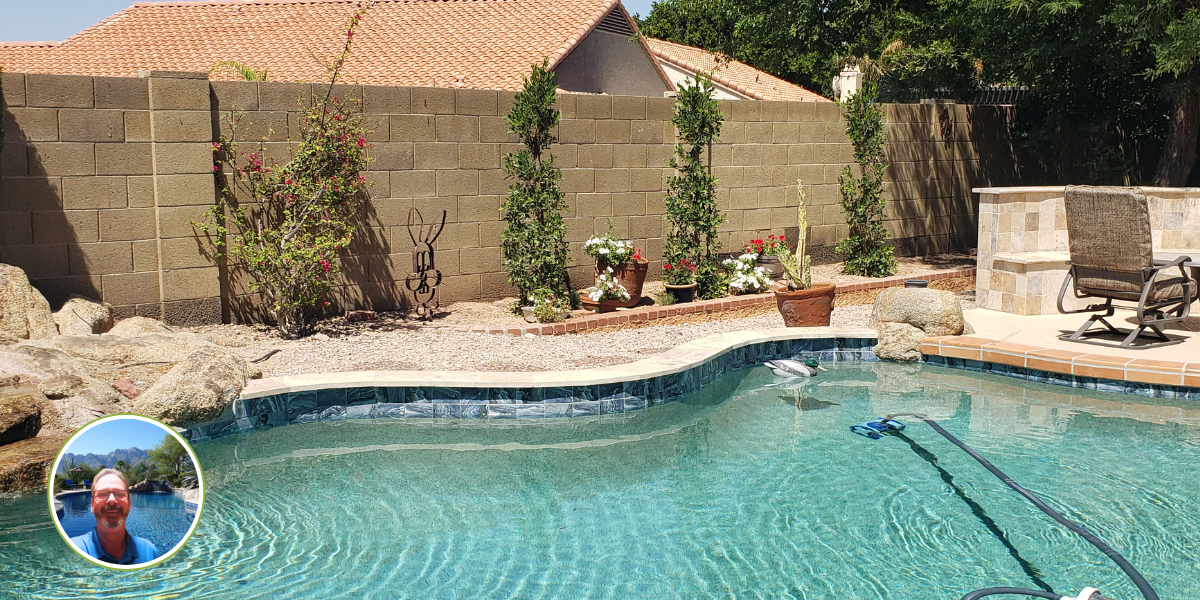Arizona Swimming Pool Rolled Bond Beams: Outdated and Inefficient
Rolled bond beams once dominated pool construction, but modern methods have made them obsolete. Learn why today’s pools use stronger, more stylish alternatives.

Arizona Swimming Pool Rolled Bond Beams: Outdated and Inefficient
For decades, rolled bond beams were a common method of finishing the top edge of a swimming pool shell. They were once considered a practical and cost-effective way to transition from the pool’s shotcrete structure to the landscape grade. But today, rolled bond beams are increasingly viewed as outdated—and for good reason.
If you’re a homeowner considering a pool renovation and staying up to date with modern best practices, it’s worth understanding why rolled bond beams have fallen out of favor and what methods have replaced them.
What Is a Rolled Bond Beam?
A rolled bond beam refers to a rounded, smoothed-over transition at the top of the pool shell. When the pool shell is shot with gunite or shotcrete, the beam is shaped by “rolling” the top edge into a rounded form. This created a soft, continuous transition that would then be coated with a pebble interior finish, running right up and over the beam to the waterline.
The approach was popular for its simplicity—fewer materials, faster forming, and a clean, rounded aesthetic without the need for extra coping stones or tile work.
Why Rolled Bond Beams Were Popular in the Past
In earlier decades, rolled bond beams made sense for many pool builders:
- Lower Initial Cost – Without the need for separate coping stones, adhesives, or complex tile detailing, construction costs were reduced.
- Faster Build Time – Rolling the beam was straightforward and quick for experienced crews.
- Minimal Materials – The beam was simply formed from the same gunite or shotcrete as the rest of the pool shell.
These factors appealed to budget-conscious homeowners and production pool builders alike.
The Problems with Rolled Bond Beams
While rolled bond beams might have been “good enough” in the past, they come with significant drawbacks that modern pool owners and builders can’t ignore.
Upgrade your pool’s look and longevity—ditch the rolled bond beam. Contact us today for a modern renovation that’s built to last.

1. Structural Weakness Over Time
Rolled beams often lack the reinforcement and thickness needed to handle years of stress from decking, soil movement, and temperature fluctuations. This can lead to cracking or separation between the pool shell and surrounding hardscape.
2. Limited Aesthetic Appeal
Today’s pool designs emphasize high-end finishes—stone coping, porcelain tile, glass mosaics—elements that can’t be easily integrated into a rolled beam structure. The rounded transition limits customization options and can make a pool look dated.
3. Finish Deterioration
With a pebble finish running right over the beam to the landscape, the finish in that area is constantly exposed to fluctuating water levels, chlorine, and UV light. This accelerates fading, staining, and surface breakdown, creating an unsightly ring around the pool over time.
4. Poor Waterline Tile Integration
Modern pools almost universally feature waterline tile to protect the interior finish and create a polished look. Rolled bond beams make proper tile placement difficult, leading to uneven lines or awkward transitions.
5. Difficult Renovations
If a pool with a rolled bond beam needs a remodel, the beam often has to be cut down or rebuilt entirely to install coping and waterline tile. This adds significant cost and complexity to the renovation process.
What Has Replaced Rolled Bond Beams?
The shift away from rolled bond beams has been driven by advances in construction techniques, materials, and consumer expectations. Today, most pool builders prefer:
Square-Cut Bond Beams with Coping
A squared-off bond beam provides a strong, level surface for setting coping stones. This creates a crisp edge and allows for a wide variety of finishes, from natural stone to precast concrete.
Dedicated Waterline Tile
By incorporating a band of ceramic, glass, or porcelain tile at the waterline, the interior finish is better protected from staining and wear. This also opens the door to creative design accents.
Improved Structural Reinforcement
Modern engineering standards call for more robust reinforcement in the bond beam area, ensuring long-term stability and resistance to cracking.
Why Modern Methods Are Better
Today’s construction methods not only solve the durability and maintenance problems of rolled bond beams but also enhance the pool’s visual appeal and property value. Coping stones can match or contrast with decking, waterline tile adds a touch of artistry, and the structural integrity of the pool is preserved for decades.
Homeowners benefit from easier maintenance, better resistance to wear, and far greater design flexibility. Builders benefit from meeting higher client expectations and avoiding callbacks for premature deterioration.
Final Thoughts
Rolled bond beams served their purpose in the early days of pool construction, but they’ve been surpassed by stronger, more attractive, and longer-lasting options. If you’re considering a pool remodel or building new, skip the rolled bond beam and choose a modern bond beam with proper coping and waterline tile.
Your pool will look better, last longer, and require far less maintenance—a win for both aesthetics and performance.
Upgrade your pool’s look and longevity—ditch the rolled bond beam. Contact us today for a modern renovation that’s built to last.
